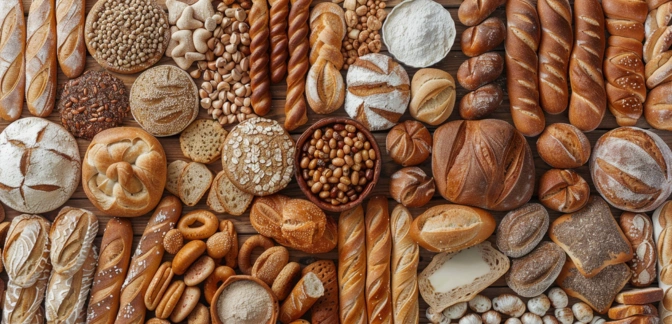Bruschetta — Nutrients, Health Benefits, And Shopping Tips

Written by Listonic Team
Last update on September 4, 2024
Nutrients
Nutrition facts
Amount per 100 g
Calories
🔥 214 kcal
| Nutrition per: 100 g | Value | % Daily Value* |
|---|---|---|
| Carbs | 26 g | 9.45% |
| Fiber | 2 g | 7.14% |
| Sugars | 3 g | 6% |
| Glycemic Index | 72 | - |
| Protein | 6 g | 12% |
| Sodium | 424 mg | 18.43% |
| Total Fat | 10 g | 12.82% |
*The % of Daily Value (DV) tells you how much a nutrient in a serving of food contributes to a daily diet. 2,000 calories a day is used for general nutrition advice.
3 g
🍏 Low Sugar Content
Key takeaways
Health benefits
- Rich in antioxidants from tomatoes, such as lycopene, which help protect the body from free radicals and reduce inflammation.
- Supports heart health with ingredients like olive oil, which contains healthy monounsaturated fats that help reduce bad cholesterol levels.
- Provides vitamins and minerals from tomatoes and garlic, such as Vitamin C, Vitamin K, and manganese, which are essential for overall health and well-being.
- Low in calories and high in flavor, making it a healthy and delicious appetizer or snack option.
- Includes fiber from the whole grain bread if used, supporting digestive health and promoting satiety.
Health risks
- High sodium content especially if topped with ingredients like salted tomatoes, cheese, or cured meats, which can contribute to hypertension and increased cardiovascular risks.
- High calorie content particularly when made with large amounts of olive oil, cheese, or other calorie-dense toppings, which can contribute to weight gain.
- Potential for overconsumption due to its appetizing nature, leading to excessive caloric intake if portion sizes are not controlled.
- Gluten content in the bread base, making it unsuitable for individuals with celiac disease or gluten sensitivity, potentially causing digestive discomfort and other health issues.
How to choose bruschetta
Bruschetta should feature fresh, vibrant ingredients. The tomatoes should be ripe and juicy, and the bread crusty and lightly toasted. Ensure the basil is bright green and aromatic.
Avoid bruschetta where the bread is soggy or the tomatoes are mushy, detracting from the texture of the dish. Also, avoid any toppings that lack freshness or vibrant color, essential for the best flavor.

How to store bruschetta
Bruschetta toppings should be stored in the refrigerator in an airtight container. For the best flavor, use them within a few days. Toasted bread slices for bruschetta can be kept at room temperature in a sealed bag.
Exposure to air can cause the bread to become stale and the toppings to spoil. Do not refrigerate the bread slices, as this can make them soggy. Preparing bruschetta just before serving ensures the best texture and flavor.
✅ Extra Tip
How long does it last?
Bruschetta, once prepared, should be consumed within 1-2 days when stored in the refrigerator. For the best taste, it's recommended to serve it fresh.
What to do with leftovers?
👨⚕️️ Medical disclaimer
Discover products from other categories
Listonic Team
Fact-checked
Our editorial team checked this article to make sure it was accurate at the time of publishing it.
Get the top-rated shopping list app

bruschetta
1 piece







